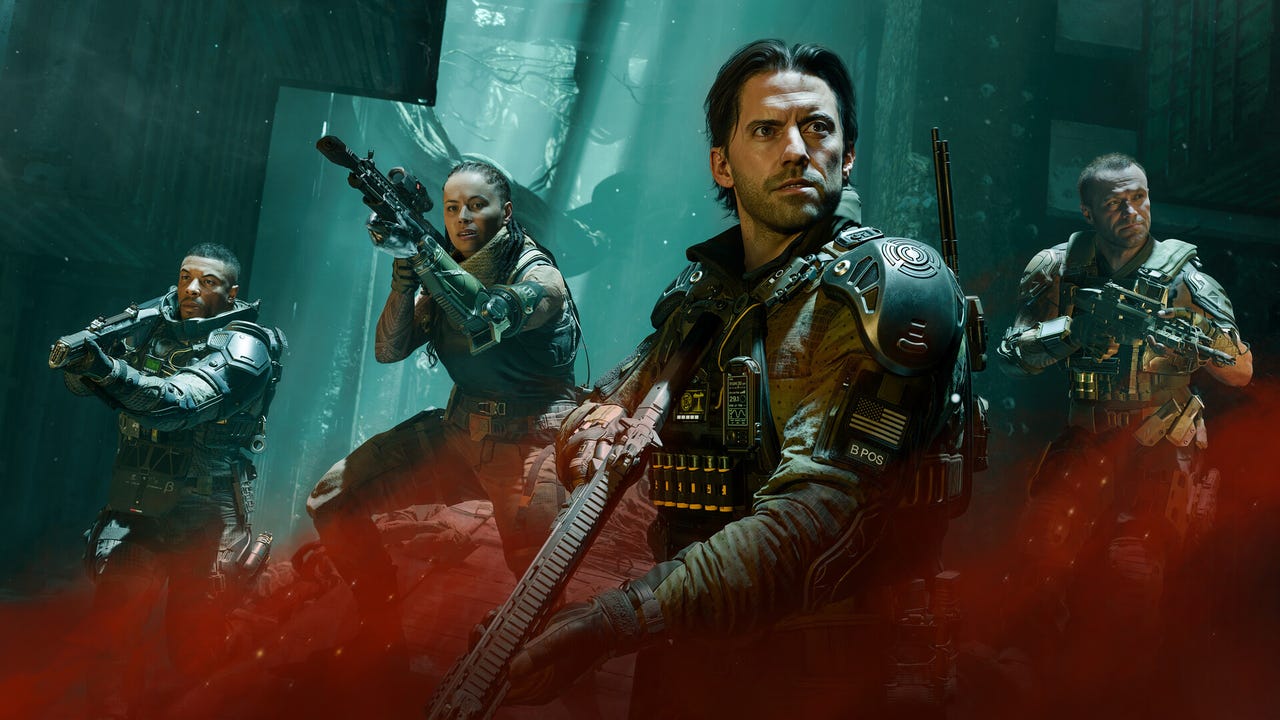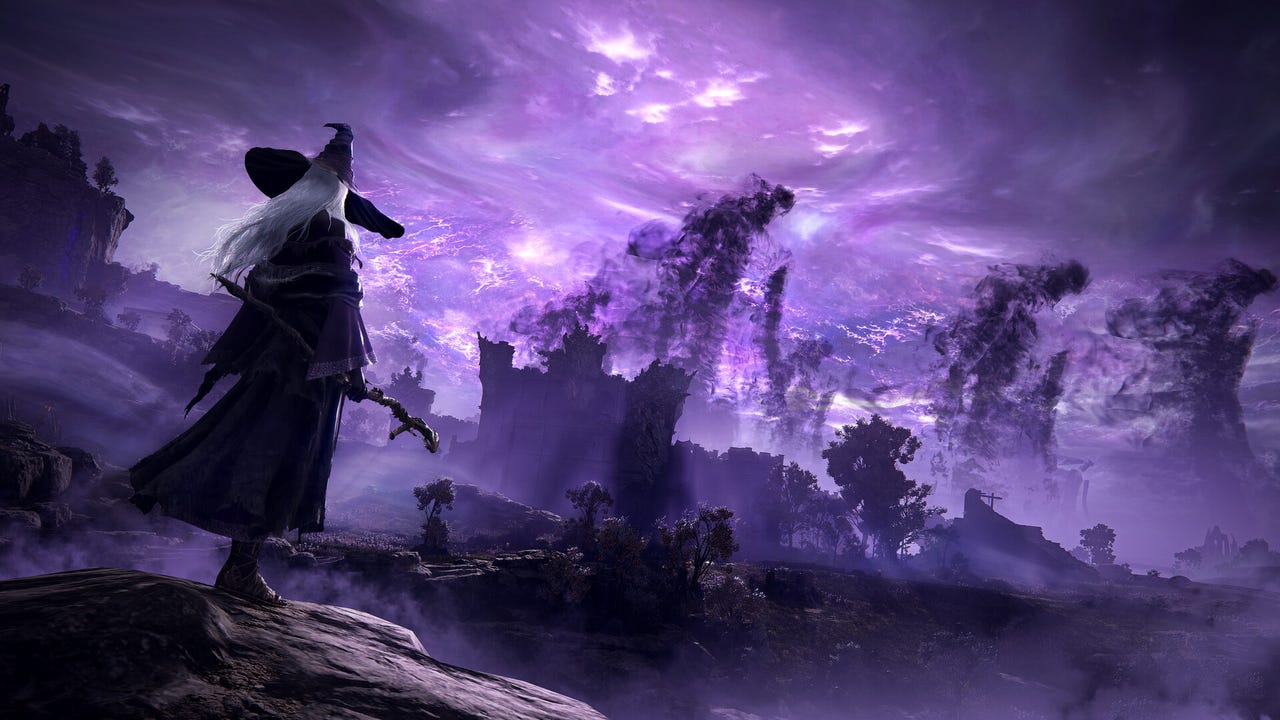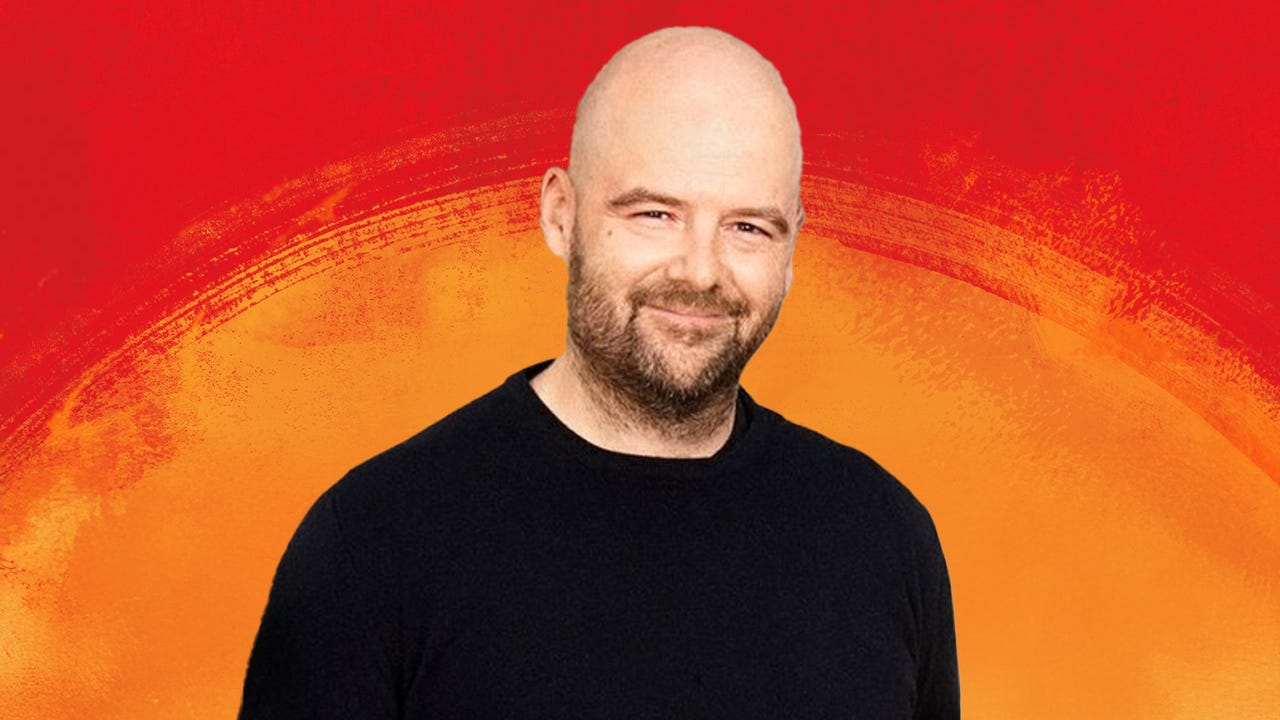When I was 13, my dad let me drive his car for the first time. It wasn’t on city streets – just in a big, empty parking lot – but I will never forget that’s the day I learned that a car creeps forward even when the driver’s not pressing the gas. Sure, I was only going a few miles an hour, but as a terrified, inexperienced driver, my heart was pounding and I felt totally out of control. I hit the brakes like a kick drum, starting, stopping, starting, and stopping, until I finally got a handle on the machine. It was a steep learning curve; before then, the closest experiences I had to real-life driving were go karts and Mario Kart, and I naively thought my hundreds of laps of motion control steering on Coconut Mall would give me some idea of what to expect.
Strangely, I thought about this memory a lot just a few days ago during my first hands-on demo with Kirby Air Riders. There are certainly a number of similarities: your character moves forward automatically without pressing any buttons, I was going completely off the rails and heavily relying on the brakes until I got the hang of things, and – most notably – my Mario Kart skills didn’t transfer whatsoever. But surprisingly, it was my Smash Bros. muscles that I found flexing instead, with Air Riders feeling like a strange pseudo-sequel to Super Smash Bros. Ultimate in the same way that Donkey Kong Bananza gave the Super Mario Odyssey treatment to another franchise. Let me explain.
Ever since Mario Kart World and Kirby Air Riders were formally revealed for Switch 2 back in April, lots of us have wondered the same thing: “Why is Nintendo releasing two kart racers in the same year?” It’s a fair question, one that even Air Riders director – and the creator of Kirby himself – Masahiro Sakurai posed in his presentation last month, joking that it “basically is like Mario Kart,” and one that he even brought up when Nintendo asked him to make Air Riders years ago.
On the surface, it’s an obvious comparison. Mario Kart World and Kirby Air Riders both feature a large roster of characters racing through colorful courses on various karts/machines, as they weaponize a wide lineup of power-ups to try to take first place. It’s easy to see why onlookers (and even Sakurai himself) would question the choice to place both of these games in Switch 2’s first six months on the market. But once I got Air Riders in my hands, I realized that Mario Kart World and Air Riders really don’t play like each other at all, even in their respective racing modes.
I got to try out the same pair of race courses as our previewer Leanne Butkovic did late last month, first speeding through the starter track, Floria Fields, before taking on the more intense Waveflow Waters. I was immediately struck by how fast Air Riders is compared to the GameCube original, where the racing always felt a bit sluggish. It echoes the jump from Smash 64 to Smash Melee: Melee is faster, more competitive, and stacks a ton of new mechanics on top of the original, just as Air Riders does when compared to Air Ride.
The difference is that Melee came out two years after the first one, and Air Riders is arriving more than two decades after its original, and it’s honestly really cool to see Sakurai pick up right where he left off, creating an iterative sequel that builds upon and fixes issues of what came before as if no time has passed at all. When Air Riders was first teased, I didn’t know what to expect from a legacy Sakurai sequel as he returned to a series from so long ago, and the answer being that it’s basically a GameCube game, but better, is a pretty cool direction to take.
Air Riders felt like a roller coaster ride at first, as I swung around tight turns and glided through exciting setpieces like a stretch of road with rumbling waterfalls on either side of it. The strategy for these races is nothing like Mario Kart World, where it’s all about knowing your route on the track, crossing your fingers for the right item at the right time, and executing shortcuts when you get the power-up you’re looking for. Air Riders is more about attacking and reacting to your opponents – Nintendo even opened its behind-closed-doors presentation to the media by calling it a “Vehicle Action Game” rather than a kart racer. To play Air Riders successfully, I needed to focus on combat and my opponent’s positioning while racing around the course, both by attacking enemies to charge up my devastating special and following the leader’s exact path to take advantage of the new Star Slide ability that increases your speed when you collect the trail of stars machines leave behind. Once I wrapped my head around these core mechanics, I started to understand that from a gameplay perspective, Mario Kart World isn’t the immediate comparison point for Kirby Air Riders: it’s Sakurai’s other darling, Super Smash Bros.
Smash is technically classified as a fighting game, but it has really carved out its own niche with its focus on advanced platforming and knocking opponents out of the arena rather than depleting a health bar, and the same concept can be applied to Kirby Air Riders. Both Smash and Air Riders exist on the outskirts of their traditional genres, resulting in games that can be intimidating at first glance due to how they defy expectations, but ones that provide shocking mechanical depth to those who heavily invest in their systems. As I said, I was incredibly overwhelmed during my first Air Riders play session, but determined to understand its intricacies, I returned to the demo three additional times during PAX West, gradually getting better and more confident each time. I was reminded of the first time I played an eight-player match of Super Smash Bros. for Wii U. It was overstimulating, chaotic, and hard to follow, and I thought there was no way it was a mode I’d ever get attached to. But Sakurai games have a way of drawing you in, and it wasn’t long before eight-player matches became a staple on game nights with friends.
I could see the same thing happening with Air Riders’ City Trial mode, which I’ve now had the chance to play eight times. This returning fan-favorite from the GameCube original drops you into an open city alongside up to 15 other players, giving you five minutes to find a better machine to ride and upgrade, with stats and powerups that spawn throughout the map. At the end of five minutes, you compete in one of a lineup of competitions with the machine you developed which range from seeing who can glide the furthest to the straight-up speed test of a drag race.
Despite Sakurai warning against it in his presentation, I spent my first few City Trial runs gobbling up every power-up I could find, and it resulted in a machine that was way too fast for the minigames that followed. I was completely off the rails, and I initially felt punished for being too greedy during the exploration segment of City Trial. But for subsequent runs, I started being more selective about which power-ups I grabbed and which I left behind, trying to make a machine well-suited for any of the possible minigames that could show up.
Sakurai’s fingerprints are truly all over Air Riders. From the slick menu and UI design – which is traditionally designed by his wife, Michiko Sakurai – to the dramatic, slow-motion, red and black finish zoom that punctuates destroying an opponent’s machine just like the final knockout in a match of Ultimate. Even the main menu’s basic black title set on a white background is the same style as Ultimate, and Air Riders’ Japanese website could easily be confused with Sakurai’s other series at a quick glance, complete with character renders and alternate costume designs that scream Smash Bros. Each character’s unique special move instantly reminded me of a Final Smash, and the sheer level of polish and attention to detail across every facet of my demo was unmistakably Sakurai.
I’m so interested to see how the public perceives Air Riders when it comes out in a couple of months. It’s more nuanced than it appears, and for that reason, I don’t think Air Riders demos very well to people playing it for the first time. I spent about two hours watching various groups demo it at PAX West, and the vibe of players felt very familiar to my very first hands-on session: overstimulated, overwhelmed, and generally confused. Air Riders presents itself as a cute, simple, approachable racer that only uses the control stick and a couple of buttons, but in reality, it’s a deep, complex action game that demands your full attention. That tough, contradictory first impression, combined with the surface-level comparisons to Mario Kart, and Air Riders’ hefty $70 price tag, makes me worried that people won’t give it the time of day when it launches in November. I hope not, because after meeting Air Riders on its own terms and working across several demo sessions to understand it, I walked away very excited for a fascinating sequel from one of my favorite creators.
Logan Plant is the host of Nintendo Voice Chat and IGN’s Database Manager & Playlist Editor. The Legend of Zelda is his favorite video game franchise of all time, and he is patiently awaiting the day Nintendo announces a brand new F-Zero. You can find him online @LoganJPlant.



Leave a Comment